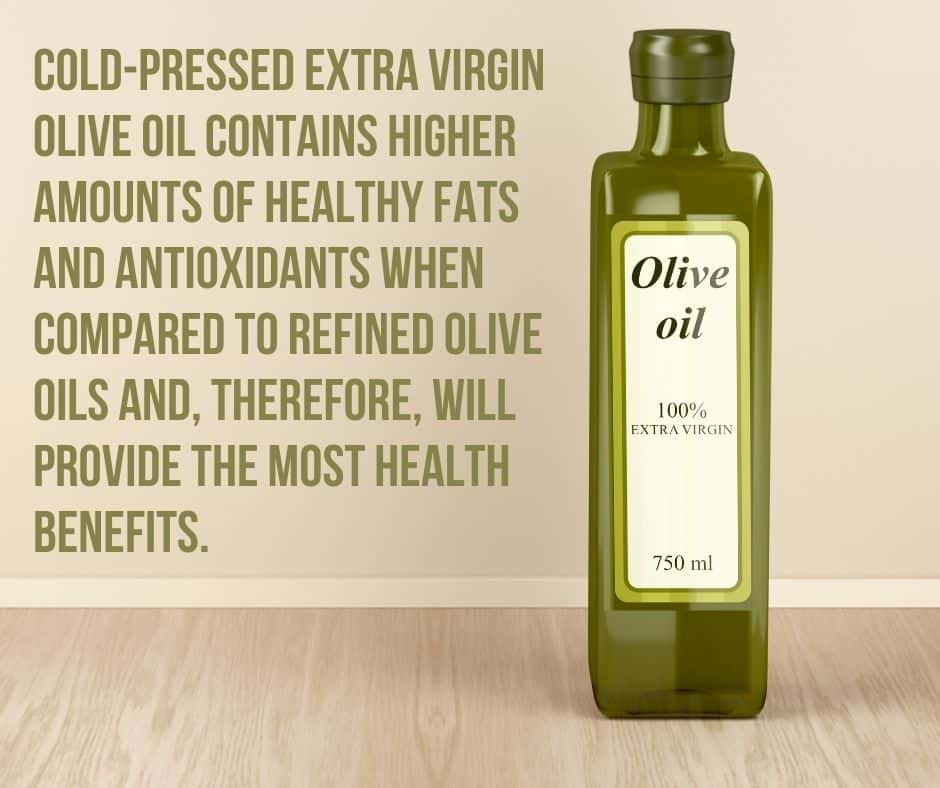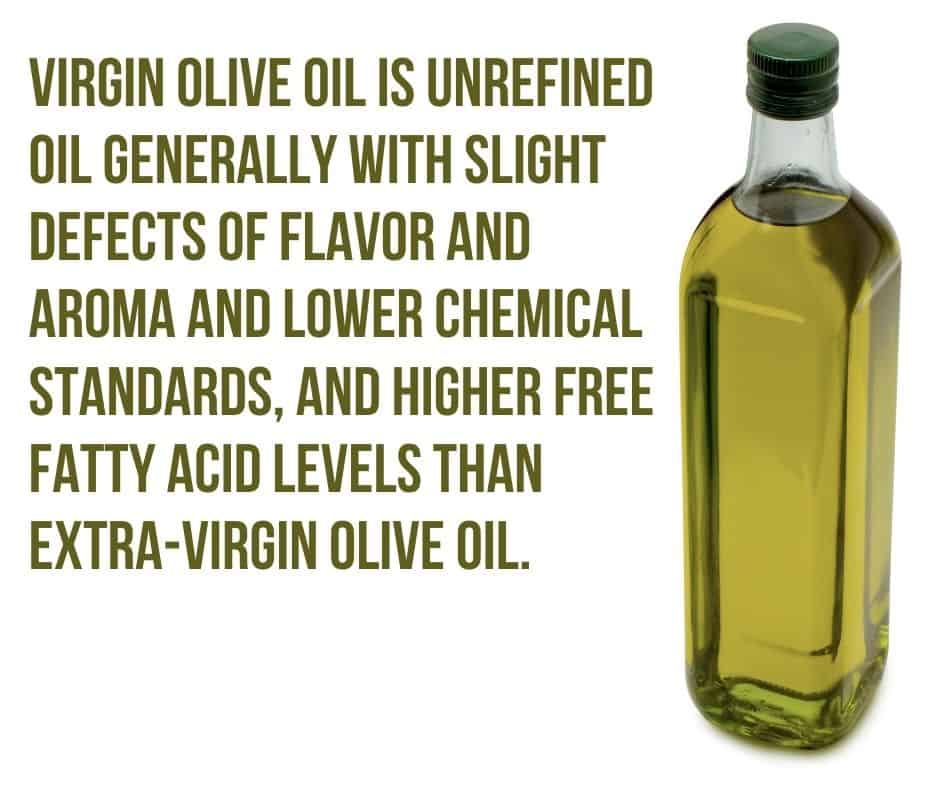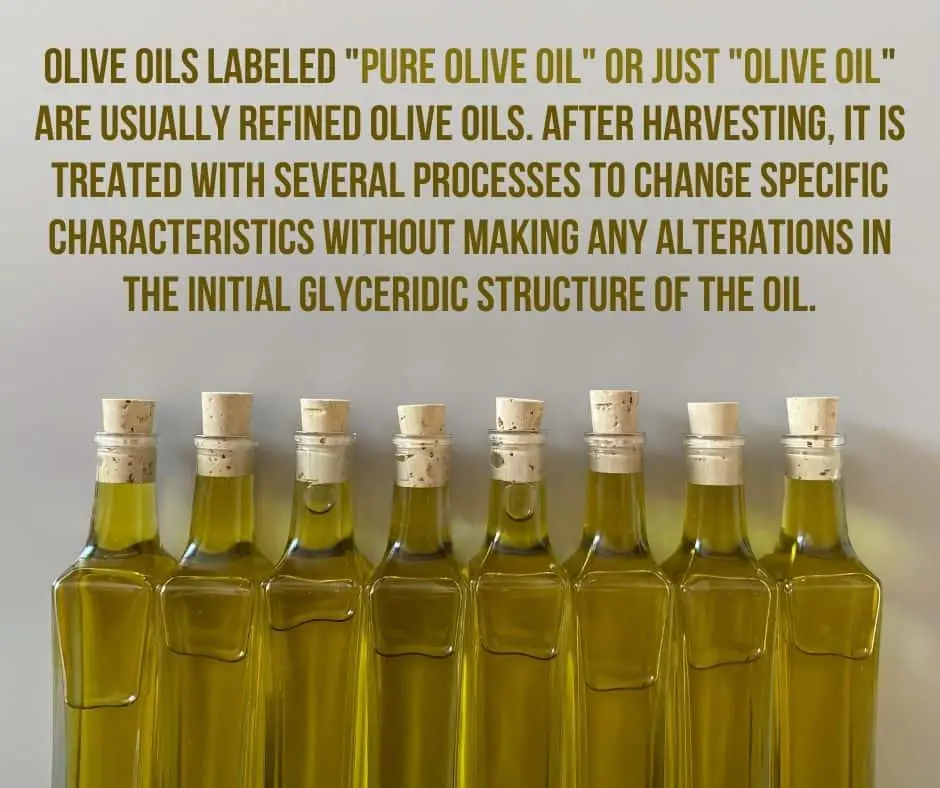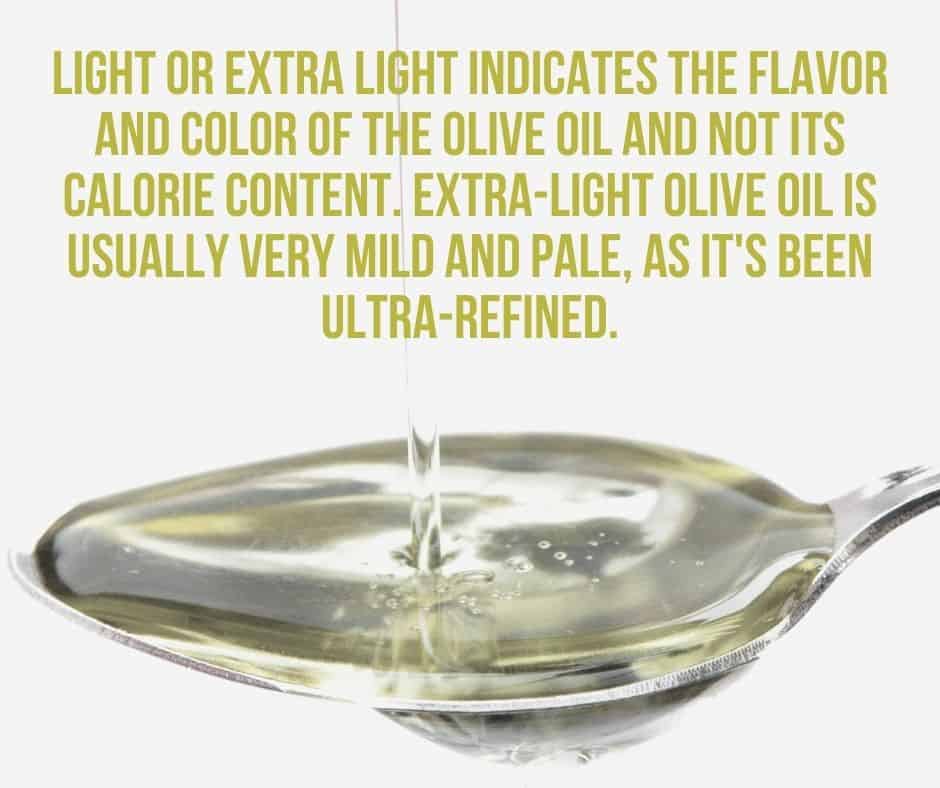Ever wondered about that slight burning sensation you feel in your throat when you ingest some olive oil? The answer is probably yes, and knowing the reason behind this will reduce your anxiety about drinking olive oil.
This article will explain in-depth why some olive oils burn your throat, different types of olive oil, and how to choose the best quality product.
Reasons Why Some Olive Oils Burn the Throat

When you get this strong stinging or burning sensation at the back of your throat after tasting olive oil, it means you have the purest form. It is a good sign and shows that the oil is of good quality and contains many natural anti-inflammatory agents [1].
This tingly feeling from olive oil is similar to that experienced when swallowing ibuprofen, and both sensations are caused by the same thing, the TRPA1 receptor.
TRPAI is a protein present on the cell’s surface located at the back of the throat. It is also distinctively sensitive to olive oil, ibuprofen, and other anti-inflammatory drugs [2].
To see where this molecule was found in the body, scientists took tissue biopsies from several volunteers. They discovered large quantities of TRPAI molecules in the cells located in the upper nose and throat but not in the tongue or mouth [3].
Olive oil contains oleocanthal, a naturally occurring phenolic compound with anti-inflammatory properties [4]. It is only detected by TRPAI, which is extra-sensitive and triggers a reaction that causes the sting experienced when olive oil is consumed.
Since TRPAI is found in the throat, the burning is felt there and not in the mouth when high-quality extra virgin olive oils are sampled [3].
Specialists of olive oils believe that coughing induced by taking a sip of olive oil indicates its purity and strength. The receptors activated by olive oil are the same as those triggered when tear gas and tailpipe exhaust are inhaled. It’s incredible to see how the body’s defense against harmful fumes is also used to indicate quality olive oil [1].
Different Types of Olive Oils

Olive oil is widely known as the world’s healthiest oil, and in making the right choice, it is necessary to know the different types. The kinds of olive oils depend on the processes used in their production.
The word “virgin and extra virgin” means that the olives have been cold-pressed to extract the oil; during the extraction process, no chemicals or heat were used, and the oil is unrefined and pure.
1. Extra Virgin Olive Oil

It is the most expensive, highest quality, and the least processed form of olive oil available [5]. Extra virgin olive oil is extracted from the olive fruit without heat or chemicals, which means it is cold-pressed. It has more polyphenols than regular olive oil and contains no more than 0.8% free acidity. It has a better taste than other olive oils that have gone through more processing.
Free acidity is a crucial factor in determining the quality of olive oils; the lower the acidity in olive oil, the greater its quality. It also indicates the amount of free fatty acids present in the oil. Thus, for healthier and nutritious choices, select the oil with less acidity. EVOO contains no more than 0.8% free acidity; therefore, it is a high-quality oil. [6].
By regulation, authentic extra virgin olive oil must be free of flavor defects determined by a taste panel. It is rich in antioxidants and has the highest minerals and vitamins present in olives [7].
EVOO has a fruity, peppery, and slightly buttery taste, with some floral and nutty tones and it is most likely to give you a burning sensation on the back of your trout as it is considered the highest quality product.
Authentic extra virgin olive oil, like the one below, is worth the additional price. It has a lovely full-bodied flavor, and to assure the purity of your bottle, it comes with the North American Olive Oil Association (NAOOA) and USDA Organic purity certifications.
Best Uses
Since Extra virgin olive oil (EVOO) has a rather low smoke point of 383℉ (195°C), it is not great for recipes that need to be cooked at high heat. Because of the more delicate nature of EVOO, it’s best to use it for drinking on its own, drizzling, dressing, and dipping. Also, low heat sautéing or baking and using in marinades and sauces is a great option.
2. Virgin Olive Oil

This type of olive oil has a slightly lower quality than extra virgin olive oil and a higher free acidity of about 1.5% [6]. It is obtained directly from the fruit with mechanical techniques without further refining processes. It has a unique flavor that differentiates it from other vegetable oils [8].
Virgin olive oil is rare and hard to find and very similar to extra virgin olive oil. It can also trigger a burning sensation on the back of your throat. It may have minor flavor defects which may be undetected by an untrained taster [7].
Best Uses
Since virgin olive oil is processed the same way as EVOO with a low smoke point, it is also not suitable for high-heat frying (deep frying).
With its nice flavor, virgin olive oil is excellent for regular frying and sautéing and drizzling on vegetables or finishing off dishes and making salads and vinaigrettes.
3. Refined Olive Oil

Refined oil is obtained from virgin olive oils that are not of the best grade and have high acidity or other flaws that make them unfit for sale. Refining removes these undesirable components without altering the initial glyceridic structure. It usually has no strong flavor or smell and is light in color or sometimes colorless. Its free acidity is about 0.3%
It is inferior in taste, flavor, vitamins, and nutrients to extra virgin and virgin olive oils. There are five refining processes used for olive oils. One or all five may be used depending on the characteristics the manufacturers are trying to change.
i. Bleaching: The oil is heated to 212 Fahrenheit (100°C ) to remove pigments and lighten the color [9].
ii. Degumming: This process is also known as water refining. The oil is treated with hot water and phosphoric acid, then spun in a centrifuge at high speed. It removes some compounds such as gummy phospholipids that may cause mucilage to form and make the oil unattractive. Some healthy polyphenols are also lost in the process [10].
iii. Deodorization: It removes the chemicals that cause unpleasant taste and odor by heating the oil up to a temperature between 300 to 500 °F (150 to 260 °C ) [9]. Fatty acids and many of the tocopherols, sterols, and polyphenols are also removed in the process [10].
iv. Neutralization: Neutralization removes color and acidity. The oil is treated with caustic acid or lye, leaving the acidity to almost zero. This process also removes a considerable quantity of carotenes and vitamin A components in the virgin olive oils [10].
v. Winterization: This process eliminates solid matter like waxes and triglycerides with a high melting point from the oil by chilling it quickly till it solidifies. Then, the solids are filtered, improving the final product’s appearance [9, 10].
Best Uses
Refined oils are best for recipes that would be overpowered by olive oil with a strong flavor. Also, they have a slightly higher smoke point than cold-pressed virgin oils and are a better choice for frying and cooking at higher temperatures.
Read Also: How To Deep Fry Food At Home — Temperatures, Smoke Points, And Cooking Times.
4. Extra Light Olive Oil

This oil has been refined to become lighter in flavor and color but not in fat or calories. It has a higher smoking point (486°F / 252°C) than many other olive oil types, suited for baking and high-heat cooking like shallow frying and deep-frying. The pale flavor also makes it unsuitable for dishes where the olive oil taste is desired. [6, 11].
Extra light olive oil is made in several ways. The first is to heavily refine olive oil via heating and a series of filters, producing a scentless and light-flavored pale oil. Another method is to add virgin olive oil with other oils, resulting in an oil with a high smoking point and light flavor [11].
Best Uses
Extra light olive oil lacks flavor. Therefore, it is ideal for baking or uses where any oil with a strong flavor would be intrusive. Its high smoking point of 465 Fahrenheit (240°C) makes it suitable for high-heat cooking, shallow frying, and deep-frying.
5. Cold-Pressed Olive Oil
This standard label can be found on various types of olives also means that the oil is extracted without the use of heat or chemicals but the olives are crushed into a paste, and exerting force via mechanical press or centrifugation extracts the oil from the pulp.
So, cold-pressed olive oils are not a particular type but kind of like a category that differentiates these oils from those that are extracted by heat, chemicals, or expeller-pressed which technically means these oils are a virgin or extra virgin.
How to Choose Good Quality Olive Oil?

There are so many olive oils to choose from, and making the right choice may seem impossible, as there’s a lot to consider in selecting the best one. It’s always a good start to know the various kinds and their differences.
Sometimes you do not have the luxury of tasting them, and it becomes difficult to assess their quality. Here are some tips that will guide you to the right choice.
1. Check The Type of Oil: Extra virgin and virgin olive oil have the best quality because they are unrefined or unprocessed. If it only says “light tasting” or just “olive oil” on the bottle with the virgin or extra-virgin, the chances are that it has been refined.
2. Taste: If you can taste the oil before purchasing it, it is a great way to verify its quality. The flavor profile of high-quality olive oil can be spicy, floral, buttery or fruity, and is judged with the nose and tongue. Good olive oil should taste fresh and clean like fresh olives and you should feel a slight burning sensation at the back of your throat.
The flavor should not be overpowering and rancid or leave a waxy residue when swallowed. Also, suppose you taste a bitterness, peppery finish, or pungency. In that case, it is a good indicator that it is rich in phenols and polyphenols. This effect is described by the Italian word amato.
3. The Type of Bottle: The best quality olive oils should come in dark bottles or tins because light, heat, and air are enemies of olive oil. Some good oils are also packaged in clear bottles, but they are put in boxes that protect them from light; if you get this type, make sure the oil is stored in both containers. Also, note that it is best to keep your olive oil in a pantry and not in an open space where it can easily be heated by the sun.
4. Best by Date: Like every other item on the shelf, olive oil has the best by date, and the fresher the oil, the better. It is not a good idea to buy a bottle without the best-by date indicated, as this means risking purchasing a product that is not fresh.
5. Polyphenol Levels: One of the main reasons for selecting the best quality olive oil is its health benefits. The polyphenol level is a huge pointer to this. Tasting the oil is a way of determining its polyphenol content. A bitter and more pungent flavor profile is usually a sign of a high amount of polyphenols.
6. Look For Purity Certifications such as the North American Olive Oil Association or California Olive Oil Council, as well as USDA Organic and Agriculture and Food Non-GMO Certification.
7. Check Where the Product Was Made. Preferably you would want an olive oil processed in Italy, Spain, or California, as these locations are known for their high standards for production.
Conclusion
Now you know why some olive oils leave a strong oral pungency in the form of a burning sensation in your throat. There is no need to worry about this, in fact, you want this, as it indicates the oil’s good quality. In this article, I have also explained the various types of olive oil and the criteria to look out for when choosing quality olive oil. With this, you make your choice free of hassles.
References
- https://oliverandgrapely.com/can-olive-oil-burn-your-throat/
- https://www.npr.org/sections/health-shots/2011/01/19/133050281/how-olive-oil-and-ibuprofen-can-make-you-want-to-cough
- https://www.oliveoiltimes.com/health-news/olive-oil-cough/11628
- https://www.ncbi.nlm.nih.gov/books/NBK5237/
- https://olivewellnessinstitute.org/article/11-health-benefits-of-extra-virgin-olive-oil-that-you-cant-ignore/
- https://www.thespruceeats.com/types-of-olive-oil-virgin-extra-virgin-and-refined-3054061
- https://www.oliveoil.com/the-different-types-of-olive-oil-their-uses/
- https://www.sciencedirect.com/topics/nursing-and-health-professions/virgin-olive-oil
- https://brightland.co/blogs/field-notes/what-is-refined-olive-oil
- https://www.aceitedelasvaldesas.com/en/faq/origen-elaboracion-clasificacion-aceite-oliva/refinado-del-aceite-de-oliva/
- https://www.delightedcooking.com/what-is-extra-light-olive-oil.htm
- https://www.healthline.com/nutrition/cold-pressed-olive-oil
- https://eur-lex.europa.eu/eli/reg_impl/2012/29/2019-02-06

